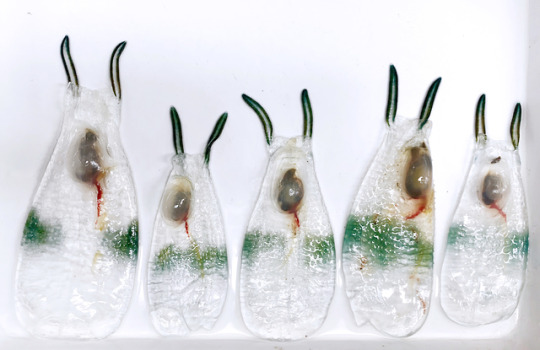#twin sailed salp
Photo

Twin-sailed salp (Thetys vagina)
Photo by Marlin Harms
#dead specimen#twin sailed salp#free swimming tunicate#thetys vagina#thetys#salpidae#salpida#thaliacea#tunicata#chordata
19 notes
·
View notes
Photo


Photo: Molly Phillips, University of California Merced.
Two examples of pelagic tunicates caught outside the North California coast: the colonial Pyrosoma atlanticum (top) made up by individual zooids arranged in a cylinder-shaped colony that is closed at one end; and the solitary Thetys vagina (bottom), known as the twin-sailed salp. You might have encountered tunicates more often by the sea shore, where sea squirts attach to rocks, piers, buoys and boats among the barnacles, sea anemones, chitons and the like. But tunicates can also live in the open ocean, like the examples above, where they filter-feed on plankton and other food matter suspended in the water column.
Like us, tunicates are chordates. During their free-swimming larval stage, that looks a little bit like a tadpole, they have a notochord and a dorsal nerve cord that is homologous to our spinal column and spinal cord. In fact, tunicates are the vertebrates' closest living relatives. However, ever since we split over 500 million years ago, tunicates have taken a wildly different, but just as successful, path compared to vertebrates; evolving the filter-feeding adult stage surrounded by a secreted, thick, gelatinous "tunic" as a form of exoskeleton. The tunic is composed of a matrix of proteins and complex carbohydrates like cellulose, and can be soft and spongy or tough and leathery, translucent or richly coloured, depending on the species.
16 notes
·
View notes